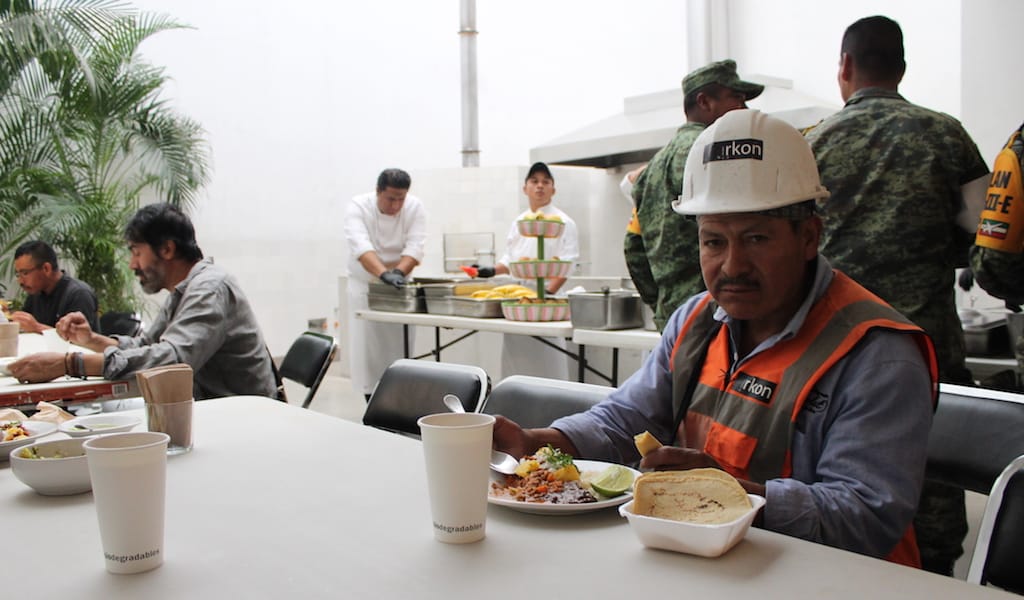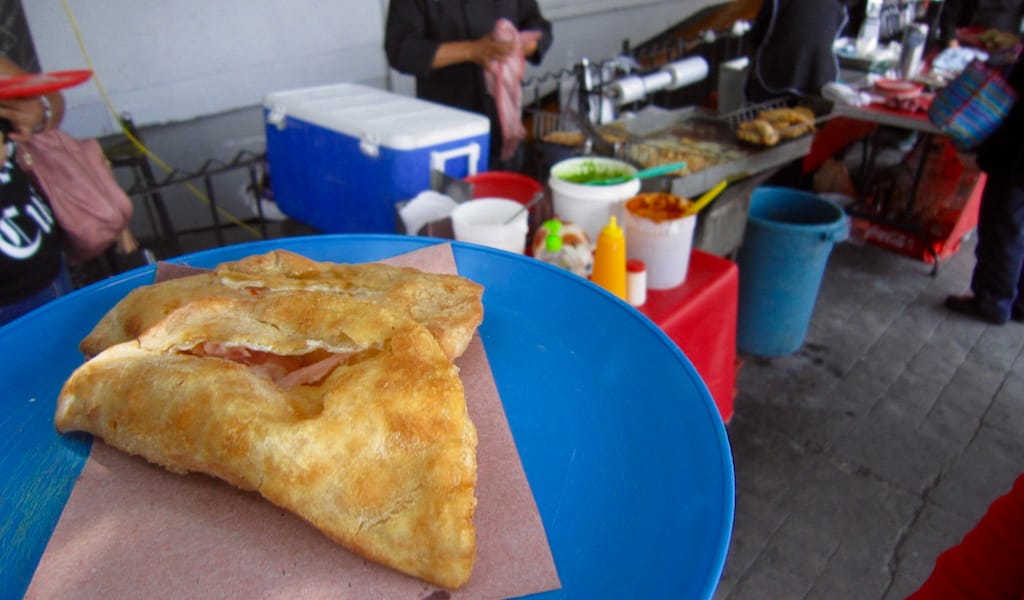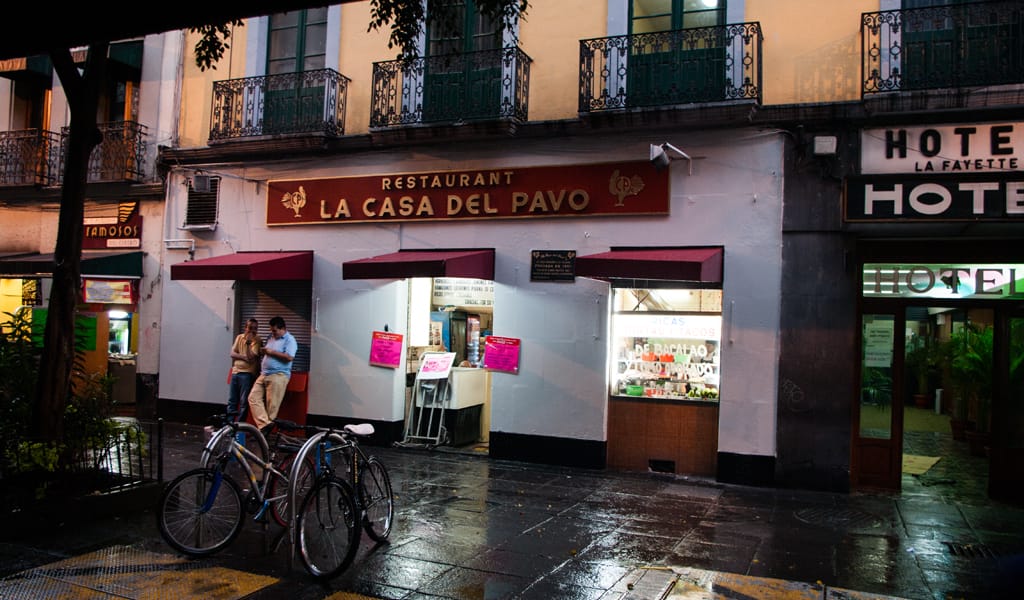In the past five years, Mexico City has flourished as an international tourist destination, and the Roma and Condesa neighborhoods are the city’s crown jewels for travelers. A typical weekend in bohemian Roma or posh Condesa might include a late lunch of tuna tostadas at Contramar, followed by a drink at Cervecería del Barrio, a bar and restaurant overlooking the scenic Plaza Cibeles. Nightclubs and bars abound, as well as tacos to chow down at 3 a.m. when bars close.
But the earthquake on September 19 put the brakes on the renaissance of Roma and Condesa. At least five buildings in the area collapsed in the 7.1 magnitude quake, and dozens more suffered damage so severe that residents were evacuated. Rescue workers in neon vests and orange helmets are now a more common sight here than well-dressed diners and partiers.
With Roma and Condesa in crisis, local restaurants – a driving force behind the neighborhood’s growing popularity – quickly jumped into action, opening their doors to feed locals and those involved in rescue and relief efforts. As recovery operations go into their second week, the total number of victims in these trendy neighborhoods is still unknown.
Lulú Solares is the manager of Cervecería del Barrio, the bar-restaurant located on Plaza Cibeles, a cobble-stoned roundabout with a Romanesque fountain in the middle. When the earthquake hit at 1:14 p.m., her first customers were just sitting down for a beer.
“We all got out onto the street, but with the force of the quake we could barely walk,” she says. “Almost immediately we started hearing the booms of collapsing buildings.”
They were just three blocks away from Alvaro Obregon 286, an office building that collapsed, trapping dozens inside. The plaza filled with smoke and the smell of leaking gas.
Around the corner on Calle Durango, Contramar’s elegant dining room, with an ocean-themed mosaic that overlooks diners, was also evacuated. Both restaurants shut down because of the gas leaks reported around the area.
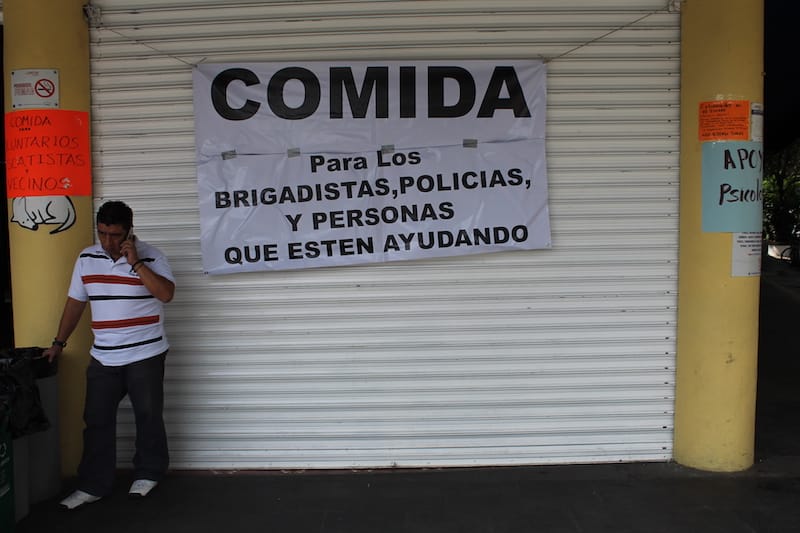
But by the next morning, they had opened their doors again, this time as free cafeterias for rescue workers, volunteers and victims’ families.
Ana Paola Rivas, who works in the Contramar restaurant consortium, says that staff immediately spoke with owner and chef Gabriela Cámara about what to do next. At the time, Cámara was in San Francisco, where her newest restaurant, Cala, opened in 2015.
“Once we were cleared to re-enter the building, we proposed to Gabriela that we open a free cafeteria in the restaurant,” says Rivas.
Cámara was on board and by Wednesday morning, Contramar’s stock of octopus, tuna and other fish was being served up to volunteers and rescue workers. Their seafood supplier, El Navegante, agreed to donate to the cause, as did their tortilla and vegetable suppliers.
“This is our way of saying thank you to everyone who has been helping,” says Rivas. “We are in a strategic location and we have invited anyone to come eat, charge their phone or use the bathrooms.”
Rivas stresses that the cooks and servers put the same care into their work after the earthquake as when they are feeding paying clients. On Wednesday, the cafeteria at Contramar served over 500 people.
“We want to offer people a dignified meal,” she says.
This wasn’t the first time Roma and Condesa suffered through an earthquake. The neighborhoods, known for their art deco architecture and tree-lined streets, were two of the hardest-hit neighborhoods in the 1985 earthquake that killed upwards of 8,000 people in Mexico City. Roma and Condesa are built atop soft soil and scores of buildings were abandoned as families decamped for safer neighborhoods.
It wasn’t until the 1990s that artists and other young people started moving into Roma and Condesa; the two neighborhoods gradually became the heart of Mexico City’s art and dining scenes. But September 19, 2017, reminded Mexico City residents that these picturesque, central neighborhoods are also extremely vulnerable to earthquakes.
“We want to offer people a dignified meal.”
This much was evident in Plaza Cibeles, which had been converted into a donation center and makeshift clinic. Nearby streets were draped in caution tape, due to the risk of falling objects.
At Cervecería del Barrio, Solares estimates that they served over 1,200 people on the day after the quake. The Cibeles location is one of 16 branches across the city, and other managers sent food from their kitchens to replenish their stock. Meanwhile, Solares sent her servers to work at other branches around the city, so they wouldn’t go without income.
Solares says her own apartment was destroyed, but that she feels an obligation to keep the restaurant’s doors open for volunteers, victims and rescue workers.
“The people at Alvaro Obregon 286 were my clients,” says Solares. “They were people who came to have lunch here, who came to have a beer after work. This is the least I can do.”
Around the corner at Alvaro Obregon 286, 27 people have been rescued alive since Tuesday, and another nine bodies have been recovered. Rescuers estimate that up to 40 people could remain trapped in the building, and the window to find survivors is all but closed.
Solares says that because her restaurant is part of a larger chain, she doesn’t have the economic pressure to re-open immediately.
“We’re a business that’s all about having a good time. But I believe that we can’t laugh while other people around us are crying… I think having the bar open right now would not be tasteful,” she says.
Meanwhile, other businesses have reopened to serve their customers and ensure income for their staff.
Contramar operated as a cafeteria on Wednesday and Thursday, but re-opened for regular service on Friday.
“We felt the responsibility to re-open Contramar because more than 50 families depend on the restaurant,” says Rivas. “We also want people to regain the confidence to come to Roma, for business to go on here.”
However, the free cafeteria continues to operate in a building a few doors down from the restaurant, where Contramar’s offices are located. Staff from Barracuda, their partner restaurant on Nuevo León in Condesa that was closed due to structural damages, are now running the show.
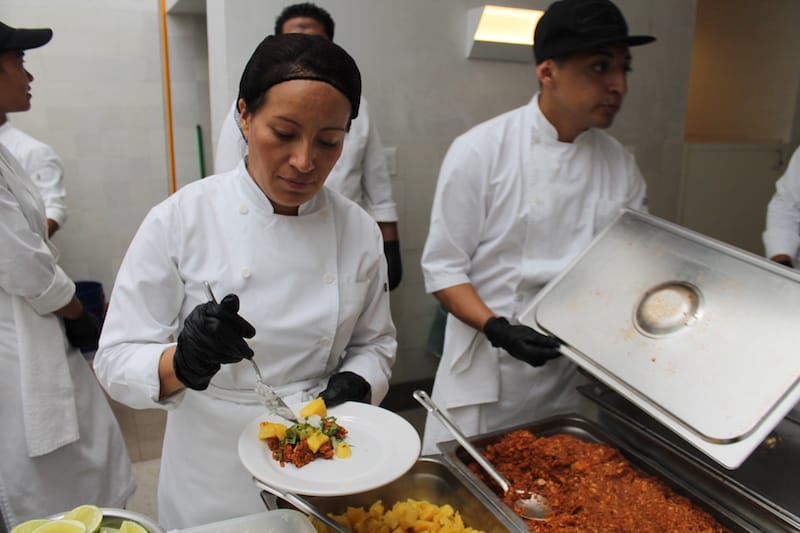
“We gave the Barracuda staff the option to stay home with their families, but everyone decided to come in and volunteer,” she says.
At 1 p.m. the other day, rescue workers, volunteers sorting donations and soldiers stationed nearby start streaming in to eat at the improvised cafeteria.
The menu is nothing less than what one would expect from the most acclaimed seafood restaurant in Mexico City. But instead of fashionable Mexicans and guidebook-toting tourists, today they are serving rescue workers covered in dust from collapsed buildings and sweaty volunteers who have spent hours sorting through donations.
The Barracuda staff pass out generous cups of hibiscus juice and dish up piping hot chicken and vegetable stew over rice. The mains are picadillo (chopped and seasoned beef) and white fish with an al pastor marinade and pineapple. A spread of fresh fruit rounds out the meal.
For rescue workers, volunteers and neighbors evacuated from their apartments, the meal is far more nourishing than the typical bagged lunch one would expect at a shelter.
Contramar and Cervecería del Barrio are just two of the dozens of restaurants around the city that have pitched in. The Mexico City website Chilango lists 28 restaurants that have been receiving donations or serving free meals after the earthquake.
No one knows how quickly, or if, Roma and Condesa’s vibrant dining and nightlife culture will recuperate from the earthquake. But judging by their willingness to serve up a hot meal to those who were affected by the quake, restaurants in the area are ready to do their part.
(Editor’s Note: As part of the relief effort, CB is raising money to help a tamale maker in the hard hit Xochimilco area go out and feed rescue workers and those displaced by the earthquake. More information can be found here.)
 July 17, 2018 Los Abuelos Empanadas
July 17, 2018 Los Abuelos Empanadas
The neighborhood of San Miguel Chapultepec sits on the west end of Mexico City’s hipster […] Posted in Mexico City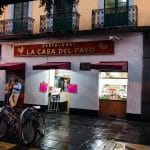 November 24, 2023 La Casa del Pavo
November 24, 2023 La Casa del Pavo
The bird that holds pride of place at the Thanksgiving table has just as important a […] Posted in Mexico City November 25, 2021 La Casa del Pavo
November 25, 2021 La Casa del Pavo
The bird that holds pride of place at the Thanksgiving table has just as important a […] Posted in Mexico City
Published on September 28, 2017
Related stories
July 17, 2018
Mexico CityThe neighborhood of San Miguel Chapultepec sits on the west end of Mexico City’s hipster corridor that runs east through Condesa and on to Roma. In the last decade, these neighborhoods have flowered with bars and restaurants fed by tourists and young people eager to impress. The corridor also had the terrible misfortune of being…
November 24, 2023
Mexico CityThe bird that holds pride of place at the Thanksgiving table has just as important a role south of the border. Turkey has actually been a fundamental part of Mexican cooking for centuries: The Aztecs had domesticated the fowl before they had even laid eyes on a chicken. And while chicken has since overtaken turkey…
November 25, 2021
Mexico CityThe bird that holds pride of place at the Thanksgiving table has just as important a role south of the border. Turkey has actually been a fundamental part of Mexican cooking for centuries: The Aztecs had domesticated the fowl before they had even laid eyes on a chicken. And while chicken has since overtaken turkey…







































